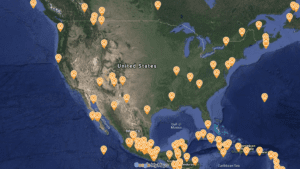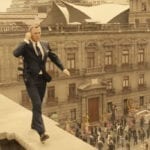The best souvenirs to carry home from a trip is undoubtedly the photographs. If you are ready to take your picture taking to the next level then start with these seven tips to improve your travel photography.
Be patient
The perfect image rarely presents itself right when you arrive at a location. If you want to improve your travel images then you have to have the mindset of a true photographer. Be patient, take your time. Study the clouds, study the flow of people. Could you get a better photo if the clouds moved slightly? What about if the people moved away from in front of the statue a little? Is there a person on a bicycle about to come into the frame? Could that make for an interesting image? Give yourself time to walk around and study the location, look at the same subject but from multiple angles and perspectives. This can sometimes be a little difficult if you are traveling with other people. In this case it’s a good idea to set everyone’s expectations ahead of time. Whenever possible try to make arrangements to get there early or stay later so you will have the freedom to be patient and get the right image.
Take walks
Explore a location on your two feet. You are going to see much more interesting things while walking through city streets, meandering along paths and weaving through street vendors and shop stalls than if you are wizzing by everything in a car. When you arrive in a new location make a point to get out of you hotel and walk the neighborhood. Use google maps to plan walking routes between points of interest and build in time to shoot along the way.
Shoot during the golden hour

This time of day is also called the “magic hour.” During the first hour after sunrise and the last hour before sunset the sun is low on the horizon. The rays of light have to travel through a lot of atmospheric particles to reach us. Those rays filter the light and make it less bright. This adds more indirect light which softens contours and lowers contrast. The thicker atmospheric particles scatter the blue and violet wavelengths so it is easier for the orange and red light to get through and produce those lovely warm, golden hues.
Side benefits of shooting during this time are that there are fewer other people out and the temperature is a lot cooler. Oftentimes I will get up and shoot during this time, go have breakfast and then return to my room for an afternoon nap when the sun is highest in the sky and it’s too hot to think.
Use the rule of thirds

The rule of thirds is a tried and true photography practice to create interesting and well-balanced images. Image dividing your image into thirds by placing two horizontal lines and two vertical lines on top of it. By placing the important subjects in your photograph on those lines, or where they intersect you create an off-center composition that is more pleasing to the eye.
Plan ahead
Do research ahead of time to get a good understanding of your location. Google images and Instagram are great for this. Look at other shots you like and study their angle and perspective. Try to figure out the vantage point and time of day of images you like. If it is a destination with opening and closing hours and admission fees find those out. Make any reservations you might need and figure out how you are going to get there.
Visit more than once
The first time you visit a location is to get an understanding of what the place is about. Go ahead and make the expected “postcard” shots and use your time to explore more in depth. Return a second time with a better understanding of the best time of day to shoot and where to go to make the best shots.
Carry the right gear
The best gear to shoot with is the gear you have. There is no point in buying a super expensive camera if you are going to leave it in the hotel when you go out for lunch. So carry the gear that you are actually willing to keep on you throughout your travels. In general a travel tripod is great for low light situations such as cloudy days or interiors. Wide angle lenses are good for landscapes and long lenses are great for shooting wildlife and objects far in the distance.



